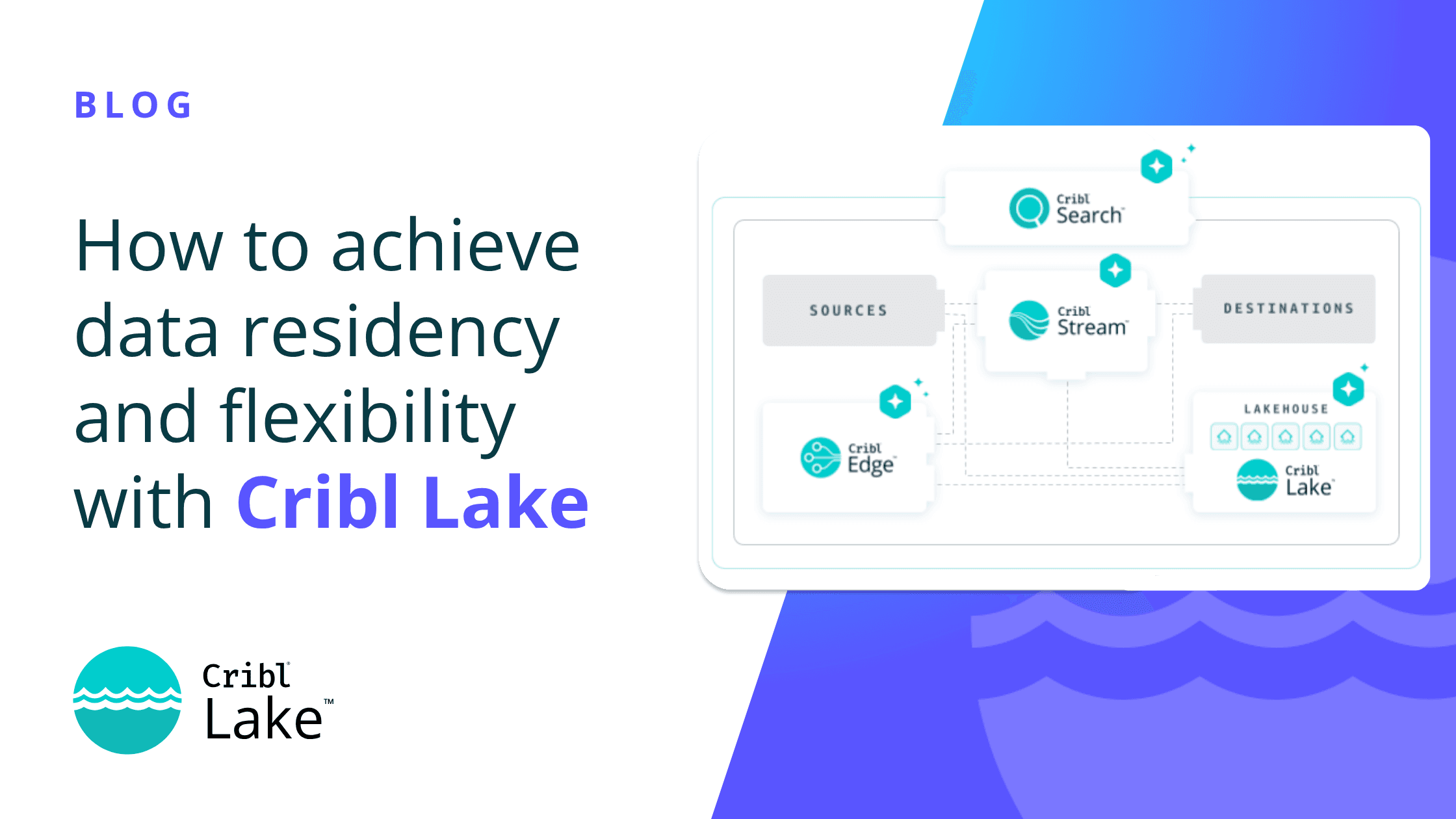
Managing and storing vast amounts of data is no small feat, and can be a real drain on resources. Organizations often need to retain data for extended periods — sometimes up to seven years — to comply with regulations. It’s a common dilemma: data volumes keep skyrocketing, but budgets don’t follow suit. IT and security teams face immense pressure to handle this data deluge while navigating procurement pitfalls. If you’re drowning in a sea of API calls, these tips will help you keep storage costs in check:
1. Stop Storing Data in Pricey SIEM or Analytics Solutions
Many organizations find themselves pouring resources into expensive SIEM or analytics solutions, which can quickly eat into budgets. While essential for monitoring and investigations, it’s unnecessary to store all your data in these tools. Cost-effective solutions like data lakes or cloud storage are better suited for handling large volumes of data.
I recently spoke to a customer at CriblCon and he expressed concerns about extracting data from data lakes when he needed to work with it in his SIEM. He was also overwhelmed by high renewal fees with his existing tools. While it’s easier to play it safe and just ingest data directly into these systems, a more cost-effective solution is to utilize a data lake that allows data to be stored in open formats. That way it’s fast and easy to retrieve and replay data whenever needed. With this approach, the data lake can act as a staging ground — an affordable place to park your data until you decide or know how to use it.
2. Optimize Tiered Data Storage
Not all data is created equal. You can strategically route your highly valuable data to optimal destinations while redirecting low-value data to more cost-effective data lakes. Setting data tiers can help you organize and store different types of data based on usage patterns, like moving less frequently used data or cold data to lower levels of storage tiers.
Not only does this save you significantly on costs, but also allows you to analyze and act on your most valuable data, ensuring critical insights are not lost and your key data remains secure and accessible. In case a security threat arises, or you need immediate access to archived data, you can easily rehydrate data and run searches on them fast without having to wait on other teams to convert, thaw, and format data correctly for you to use it.
3. Use a Cloud-based Data Lake
With a cloud-based approach, you can say goodbye to the high costs associated with
maintaining physical infrastructure — hard drives, storage arrays, etc. By eliminating the need for on-site servers and storage solutions, you can significantly cut operational expenses. This cloud-centric model offers data durability, and also ensures you only pay for the storage and processing power you actually use, making your data management strategy more efficient, more secure, and more economical.
4. Reduce Operational Overhead and Unknown Costs
While object stores offer a cost-effective solution for data storage, the associated fees can quickly accumulate, leading to unexpected expenses and budgeting challenges.
Writing data: storing data isn’t just about the space it occupies. Each time you write data, there is a fee involved. For organizations with large volumes of data or frequent updates, these write costs can be substantial.
Reading data: retrieving data from an object store incurs read costs. Whether for analysis, reporting, or day-to-day operations, frequent data access can significantly increase expenses. These read fees can be particularly burdensome for applications that require real-time data processing or frequent retrievals.
Egress fees: egress fees are charged when data is transferred out of object store to another location, whether for backup, migration, or integration with other systems. These fees vary based on volume of data and the destination, leading to unpredictable costs especially for businesses with extensive data transfer needs.
How can you get around these costs? Look for a data lake solution that offers upfront pricing and only charges you for the data stored. This makes for easier forecasting so you aren’t surprised when the bill comes.
Likewise, building and maintaining a traditional data lake often requires teams of specialized professionals like data engineers and cloud engineers. With the right solution, you can simplify operations and avoid the expense of hiring costly experts. Look for a data lake with an intuitive platform designed to be user-friendly, enabling your existing team to manage data storage with ease. This not only reduces staffing costs but also streamlines your data management processes.
5. Compress and Deduplicate Data
Zip up data and deduplicate redundant data to save money. Compressed data can fit into cheaper storage tiers. For example, archival storage solutions are less expensive than high-performance storage. Long-term storage costs are lower since compressed data takes up less space in archival systems, which are often priced based on the volume of data stored.
Some data management platforms offer as high as 20-30x compression which is a HUGE cost savings. Compressed data also requires less bandwidth for routing and transfers. Smaller file sizes mean data can be transferred faster, improving overall system efficiency and reducing operational costs.
Slash Storage Costs With Cribl Lake
Cribl Lake is a cost-effective, simplified data lake solution that makes it easy to store, manage, and access data. Slash storage costs by:
Utilizing Cribl Lake as a staging ground, where you can park data in the meantime until you’re ready to work with it in your SIEM or analysis tools.
Using Cribl Stream and Cribl Edge to route and aggregate data to your downstream tools while retaining a full copy in Cribl Lake, which you can Search for later if you need the full detail. Save on downstream costs, but retain full fidelity if you need to return to it.
Spinning up a fully usable cloud data lake in just minutes via the Cribl.Cloud platform. No need to pay for or manage the underlying infrastructure. Cribl Lake’s Bring Your Own Storage (BYOS) option also allows you to keep data in your existing object storage and use Cribl Lake as an abstraction layer for a unified view into all your data.
Not having to struggle with forecasting and estimating your API costs. Get straightforward and transparent pricing in Cribl.Cloud. Draw down from your pool of Cribl Credits to use towards any Cribl product without friction.
Not relying on data or cloud experts to store and access data. Cribl Lake offers a super easy and intuitive experience and doesn’t require costly experts to use. IT and security teams can easily set retention policies, security and access controls, and also manage their own data routing and storage to streamline workflows.
Compressing and storing data in Cribl Lake to save significantly on storage costs. Run queries via Cribl Search on data stored in Cribl Lake (or wherever data resides), and only pay for the data stored and the searches performed. (Note that some SIEM solutions charge based on the raw data volume saved, not the actual amount of data stored). Learn more about Cribl pricing.
Get started with the Cribl Lake Sandbox today!







